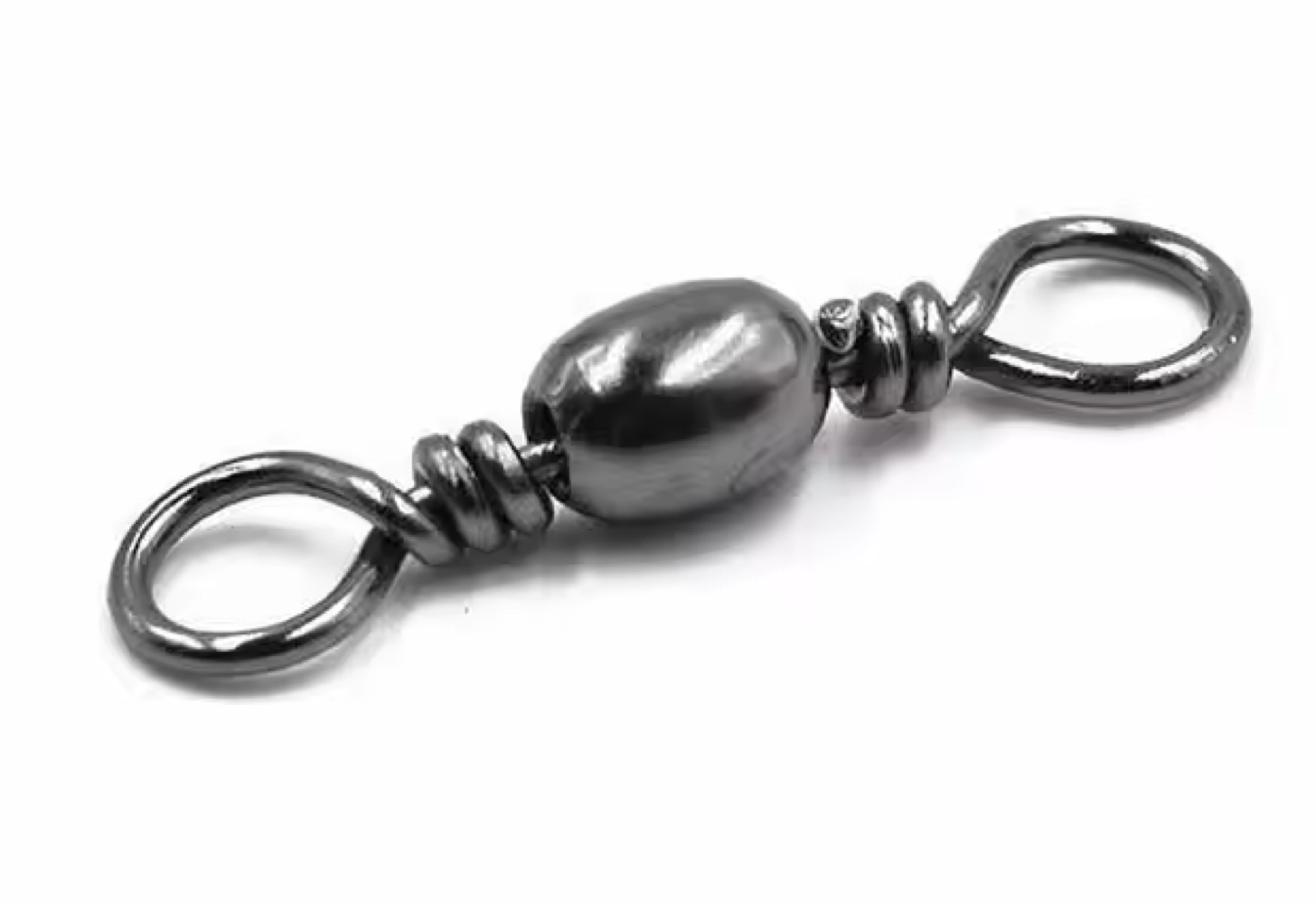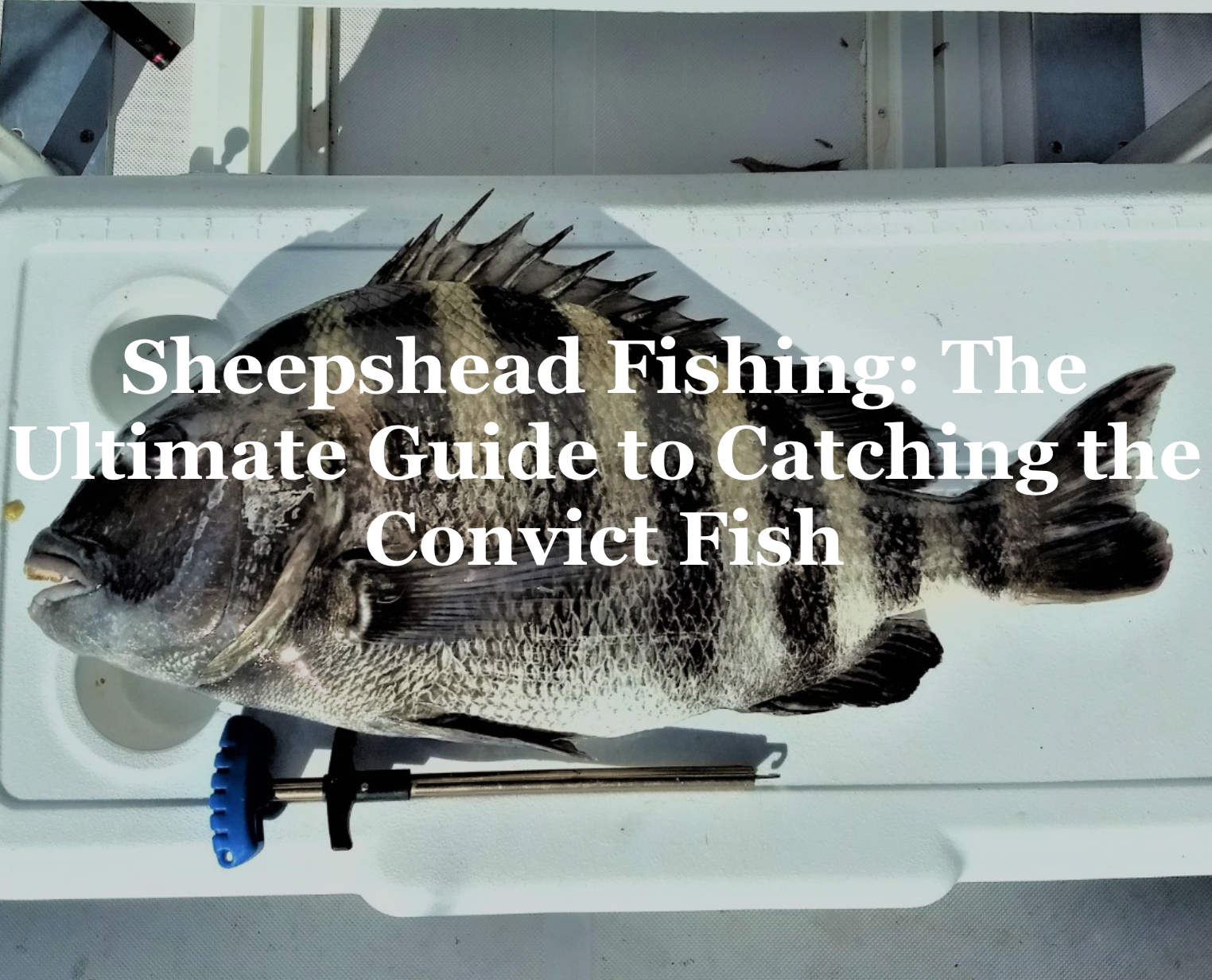Barrel swivels are a cornerstone of fishing tackle, offering a simple yet effective solution to common challenges faced by anglers. Whether you’re casting for bass in a freshwater lake, trolling for mackerel in the ocean, or ice fishing for panfish, barrel swivels can enhance your setup by preventing line twists, connecting different line types, and reducing lure loss. This guide provides a comprehensive overview of barrel swivels, covering their purpose, types, selection criteria, usage, maintenance, and expert tips to ensure you get the most out of this essential piece of terminal tackle.
What Are Barrel Swivels?

A barrel swivel is a small piece of terminal tackle with a pivoting joint in the middle and two metal rings (eyes) at each end. The joint allows the rings to rotate freely, preventing line twists caused by spinning lures, baits, or strong currents. Barrel swivels are typically made from brass, stainless steel, or nickel-plated materials, with options like barrel swivels with interlock snaps for quick lure changes. They’re affordable, widely available, and come in various sizes and strengths to suit different fishing scenarios, from freshwater trout to saltwater surf fishing.
|
Component |
Description |
|---|---|
|
Two Rings |
One connects to the main line, the other to the leader or lure. |
|
Pivoting Joint |
Allows independent rotation to prevent line tangles. |
Why Use Barrel Swivels?

Barrel swivels offer several benefits that can improve your fishing efficiency and success:
-
Prevent Line Twist: Spinning lures like spinners or spoons, or fish that roll (e.g., catfish, pike), can twist your line, leading to knots or breakage. Barrel swivels allow the line to untwist, maintaining its integrity.
-
Connect Different Line Types: They provide a reliable connection between a main line (e.g., braid) and a leader (e.g., fluorocarbon), allowing you to combine the strengths of different materials.
-
Reduce Lure Loss: When fishing with crankbaits near obstacles like rocks or trees, a barrel swivel with a stronger leader (e.g., 12-17 lb fluorocarbon) can prevent lure loss.
-
Enhance Invisibility: Pairing a swivel with a fluorocarbon leader reduces line visibility in clear water, minimizing the chance of spooking fish.
-
Versatility: Barrel swivels are effective in open water, ice fishing, freshwater, and saltwater, adapting to various rigs and techniques.
Types of Fishing Swivels

While barrel swivels are the focus, understanding other swivel types helps you choose the right tool:
|
Swivel Type |
Description |
Best Use |
|---|---|---|
|
Barrel Swivel |
Affordable, simple, with two rings and a pivoting joint. May lock up under heavy loads. |
General fishing, spinning lures, light to medium fish. |
|
Snap Barrel Swivel |
Includes a snap hook for quick lure changes. Adds bulk. |
Frequent lure changes, convenience. |
|
Three-Way Barrel Swivel |
Has an extra ring for complex rigs. |
Bottom fishing, drift fishing, multi-hook setups. |
Barrel swivels are the most common due to their affordability and wide size range, but other types of barrel swivels may be better for heavy-duty applications.
How to Choose the Right Barrel Swivel

Selecting the appropriate barrel swivel depends on several factors:
-
Line Strength: Match the swivel’s strength to your line’s test rating. For example, a 20-pound test line requires a swivel rated for at least 20 pounds.
-
Target Fish: Smaller fish (e.g., trout) need smaller swivels (size #10, 30 lbs), while larger fish (e.g., bass, pike) require stronger ones (size #1 or 1/0, 150-175 lbs).
-
Lure Type: Spinning lures like spinners or spoons necessitate swivels to prevent twist, while non-spinning lures like jigs may not.
-
Fishing Environment: Use corrosion-resistant swivels (e.g., stainless steel) in saltwater and rinse after use.
Barrel Swivel Strength Chart

How to Determine Barrel Swivel Strength: Check the packaging for the test strength (in pounds). Ensure it exceeds your line’s breaking strength to avoid failure under pressure. For big game, consider ball bearing barrel swivels with interlock snaps for superior strength and rotation.
|
Size |
Length (in.) |
Test Strength (lbs.) |
|---|---|---|
|
14 |
5/16 |
10 |
|
12 |
3/8 |
10 |
|
10 |
7/16 |
30 |
|
7 |
1/2 |
75 |
|
5 |
9/16 |
90 |
|
3 |
5/8 |
100 |
|
1 |
3/4 |
150 |
|
1/0 |
7/8 |
175 |
|
2/0 |
1 |
225 |
|
4/0 |
1 1/4 |
350 |
How to Use Barrel Swivels
Using a barrel swivel is simple but requires proper technique:
-
Attach the Main Line: Tie your main line (e.g., braid) to one swivel ring using a Palomar knot, known for its strength with braided lines.
-
Attach the Leader or Lure: Tie a 12-18 inch leader (e.g., fluorocarbon) or lure to the other ring using a Uni knot, versatile for monofilament or fluorocarbon.
-
Check Rotation: Ensure the swivel rotates freely before casting to confirm it’s not stuck or damaged.
-
Adjust Leader Length: Use a 12-18 inch leader to keep the swivel from interfering with lure action, adjusting based on fishing conditions.
How to Tie Barrel Swivels to Fishing Line

Tying a barrel swivel to your fishing line is simple with the right knot. The Improved Clinch Knot and Palomar Knot are two reliable options:
Improved Clinch Knot - Reliable for fluorocarbon or monofilament.
-
Thread the line through the swivel’s eye.
-
Wrap the tag end around the main line 5-7 times.
-
Pass the tag end through the loop near the swivel’s eye.
-
Pull the tag end to tighten, ensuring the knot is centered for optimal rotation.
-
Trim excess line.
Palomar Knot - Ideal for braid-to-swivel connections.
-
Double the line and pass the loop through the swivel’s eye.
-
Tie an overhand knot with the doubled line, leaving the loop intact.
-
Pass the swivel through the loop.
-
Pull both the main line and tag end to tighten.
-
Trim excess line.
Pro Tip: Wet the line before tightening to reduce friction and ensure a strong knot. Center the knot on the swivel’s eye for smooth rotation.
When Should I Use a Barrel Swivel?

Use a barrel swivel in these scenarios:
-
Spinning Lures: For inline spinners, spoons, or other rotating lures that cause line twist.
-
Strong Currents: In rivers or surf fishing, where currents can twist the line.
-
Trolling: To prevent line twist during long retrieves, especially with ball bearing barrel swivels with interlock snaps for smoother rotation.
-
Leader Attachment: To connect a leader to the main line, maintaining a strong, twist-free connection.
Should I Use a Barrel Swivel to Attach a Leader?
Yes, barrel swivels are ideal for attaching leaders, as they provide a secure connection and prevent twist. However, in pressured fisheries, use a fluorocarbon leader to minimize visibility.
When Should I Avoid a Barrel Swivel
-
Non-spinning lures (e.g., jigs, soft plastics) may not require swivels, as they add unnecessary bulk.
-
Overuse can increase visibility, potentially spooking fish in clear water.
Advantages and Disadvantages
|
Aspect |
Advantages |
Disadvantages |
|---|---|---|
|
Functionality |
Prevents line twist, connects line types, reduces lure loss. |
May lock up under heavy loads, affecting performance. |
|
Cost |
Affordable and widely available. |
Low-quality swivels may fail under pressure. |
|
Versatility |
Suitable for various fishing methods and environments. |
Adds bulk, potentially affecting lure action. |
|
Durability |
High-quality swivels are long-lasting with proper care. |
Are All Barrel Fishing Swivels the Same?
No, barrel swivels vary in:
-
Material: Brass, stainless steel, or nickel-plated. Stainless steel is more corrosion-resistant for saltwater.
-
Design: Standard barrel swivels, barrel swivels with interlock snaps, or ball bearing barrel swivels with interlock snaps for smoother rotation.
-
Strength: Varies by size and brand (e.g., Eagle Claw Barrel Swivel Weight Rating ranges from 10-350 lbs).
-
Finish: Black, chrome, or brass finishes affect visibility and corrosion resistance.
Snap Swivel vs. Barrel Swivel: What’s the Difference?

When choosing between a snap swivel and a barrel swivel, it’s essential to understand their distinct features:
-
Barrel Swivel: A basic swivel with two rotating eyes, designed to reduce line twist. It’s compact and ideal for connecting main lines to leaders or lures directly. However, it requires tying knots to attach lures, which can be time-consuming.
-
Snap Swivel: A barrel swivel with a snap (e.g., interlock or safety snap) attached to one end, allowing quick lure or leader changes without retying knots. Snap swivels, like the Eagle Claw Barrel Swivel with Interlock Snap, are convenient but slightly bulkier, which may spook fish in clear water.
When to Choose: Use a barrel swivel for stealth and simplicity in rigs where line twist is a concern, such as drop shot or deep-water fishing. Opt for a snap swivel when versatility and speed are priorities, like when frequently switching lures during bass fishing.
What Purpose Is a 3-Way Barrel Swivel Solid Rig?

A 3-way barrel swivel has three eyes, allowing you to:
-
Attach the main line to one eye.
-
Connect a leader with a hook or lure to the second eye.
-
Tie a weaker leader with a weight to the third eye, which breaks off if snagged, preserving the rig.
Use Cases:
-
Bottom fishing for catfish or flounder, where a sinker is needed.
-
Trolling with multiple lines to present baits at different depths.
-
Surf fishing to keep bait near the bottom while avoiding snags.
Best Barrel Swivels by Brand

When selecting barrel swivels for fishing, several brands stand out for their quality, durability, and performance across various fishing scenarios. Here are the top five brands and their notable barrel swivel products, ideal for anglers seeking reliable tackle:
American Fishing Wire (AFW)
Offers the AFW Mighty Mini Barrel Swivels AFW Mighty Mini, which are 100% stainless steel and three times stronger than conventional brass swivels of the same size, making them perfect for stealthy rigging in both freshwater and saltwater. Their compact design ensures minimal visibility to fish.
VMC
Known for the VMC Rolling Swivels VMC Rolling, made from premium brass with a black nickel finish, these provide smooth rotation to prevent line twist, suitable for vertical jigging and general use. The VMC Stainless Steel Rolling Swivels VMC Stainless are corrosion-resistant, ideal for saltwater fishing.
Quick Rig
Features the Quick Rig Power Barrel Swivels Quick Rig Power, which are small yet exceptionally strong, offering great value for connecting fluorocarbon leaders or different line types. These are particularly useful for anglers needing compact, high-strength swivels.
Sea Striker
Provides the Sea Striker Billfisher Stainless Steel Crane Barrel Swivels Sea Striker Crane, lightweight with a black oxide finish for durability, and the Sea Striker Billfisher Krok Barrel Swivels Sea Striker Krok, which are all stainless steel and over three times stronger than standard swivels, perfect for heavy-duty fishing.
Sampo
Renowned for the Sampo Barrel Swivels Sampo Barrel, these American-made brass swivels with a black finish are designed to spin easily, minimizing line twist while maintaining high strength, making them a trusted choice for anglers worldwide.
These brands offer a range of options to suit different fishing needs, from freshwater to saltwater and light to heavy-duty applications. While specific brands on Tackle Pier may vary, these are widely recognized in the fishing community and likely available through various tackle retailers.
FAQ's - Barrel Swivel

What Size Is a 1" Fishing Swivel Barrel?
A 1" barrel swivel typically corresponds to a size 2/0, with a test strength of around 225 lbs, ideal for large game or saltwater fishing.
What Size Barrel Swivel for Trout?
For trout, use a size 10-14 swivel (10-30 lb test) to match light lines (2-6 lb) and maintain a subtle presentation.
What Size Barrel Swivel for Surf Fishing?
For surf fishing, choose a size 1 to 2/0 swivel (150-225 lb test) to handle heavy lines (15-30 lb) and strong currents.
What Number Are Large Rolling Barrel Fishing Swivel Black?
Large black rolling barrel swivels are typically sizes 1/0 to 4/0, with strengths from 175-350 lbs, suited for saltwater or big game.
Conclusion
Barrel swivels are an essential tool for any angler, offering versatility, strength, and convenience. By understanding how to use a barrel swivel, how to tie it to fishing line, and how to choose the right size, you can prevent line twists, streamline your rigs, and increase your catch rate. Whether you’re targeting trout with a size 10 swivel or battling saltwater giants with a 2/0 barrel swivel with interlock snap, this guide has you covered. Invest in quality swivels, match them to your fishing needs, and hit the water with confidence!






Share: